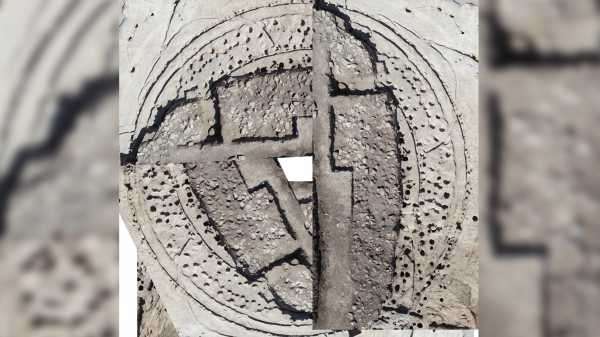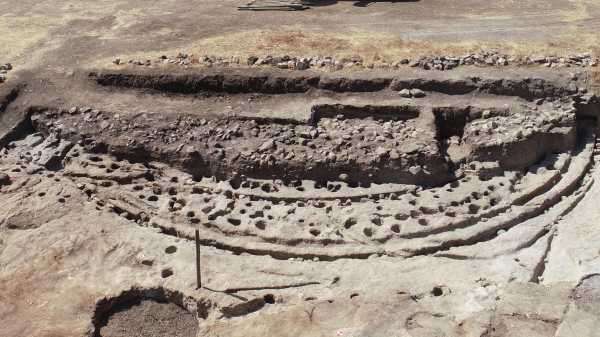
Only one-third of the circle has been excavated so far, so archaeologists created this projection to give a better sense of its size. The portion that has been excavated is shown at far left. Archaeologists estimate the circle to be about 66 feet (20 meters) in diameter.
The remains of several timber circles constructed over 4,500 years ago have been discovered at the Perdigões complex archaeological site in Portugal.
Though some news outlets have described the circles as a “woodhenge,” akin to the famous Neolithic monument of Stonehenge, archaeologists prefer not to call it that – instead referring to them a “Timber Circles.” While the archaeologists prefer a different name the design is similar with wooden posts encircling an area.
“We interpret it as a ceremonial place and prefer to refer to it as timber circles,” said António Valera, an archaeologist with the Era Arqueologia company, who is leading excavations at the site.
Only about a third of the timber circles have been excavated so far, and only post holes and ditches from the circles remain. There is an opening in the Timer Circles that appears to be aligned to the summer solstice — the longest day of the year — Valera told Live Science.
Related
—Image gallery: Digging up at tomb at the Swedish Stonehenge
—Photos: Ireland’s Newgrange passage tomb and henge
—Photos: stone monument discovered in Scotland
The ceremonial complex was likely constructed between 2800 B.C. and 2600 B.C., about the same time period Stonehenge was being built and used in England, Valera said. At the time, the timber circles would have enclosed an area that was about 66 feet (20 meters) in diameter, he estimates. Excavations are ongoing and most of the artifacts found so far at the timber circles consist of pottery fragments and animal remains, Valera said.

The timber circles date back 4,500 years.
The Perdigões complex archaeological site, in the Evora district in southern Portugal, where the timber circles were found, covers about 40 acres (16 hectares) of land and includes burial grounds and standing stones like those used at Stonehenge. People would have used the complex between roughly 3500 B.C. and 2000 B.C. for burial and ceremonial activities — it may have had other uses also.
Archaeologists have been excavating the complex for more than 20 years and research is ongoing.
Originally published on Live Science.
Sourse: www.livescience.com





